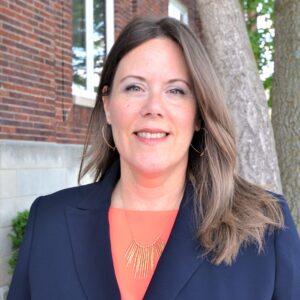Many families looking into residential programs for troubled youth near me may worry about logistics, stigma, or disruptions in care. Virtual therapy offers a solution: teens and young adults (ages 12–24) can engage with counselors remotely to address substance use, maintain privacy, and stay connected through transitions. At Ember Recovery, we integrate virtual therapy into our continuum—from preparing for residential care to post-treatment support.
Why Virtual Therapy Helps Teens in Recovery
Virtual therapy addresses several barriers that deter teens from seeking help:
- Privacy & confidentiality: Teens can meet counselors from a safe space at home without worrying about being seen entering a treatment center.
- Flexible scheduling: Sessions can take place before or after school, during evenings, or on weekends.
- Reduced stigma: Remote sessions eliminate the visibility of being in an addiction clinic.
- Continuity through transitions: Whether stepping into teen residential treatment Central Iowa or stepping down to outpatient support, virtual care helps maintain momentum.
Telehealth adoption in behavioral health has surged: the percentage of substance use treatment facilities offering telemedicine jumped from 25.7% in 2015 to 58.6% in 2020.
Evidence & Best Practices Supporting Virtual Therapy
Ember Recovery’s model aligns with evidence-based recommendations from national institutions:
- NIDA’s “Principles of Adolescent Substance Use Disorder Treatment” emphasizes that treatment must be tailored to adolescents—and that families and community play a crucial role.
- SAMHSA’s guide “Telehealth for the Treatment of Serious Mental Illness and Substance Use Disorders” outlines best practices for implementing telehealth in addiction and mental health care.
- Research summaries from HHS & telehealth oversight show that telehealth can expand access, especially for underserved or rural populations, and complement in-person services when balanced properly.
These resources support Ember’s belief that virtual therapy is not inferior—it’s a vital component when used strategically.
How Ember Recovery Uses Virtual Therapy
Preparatory & Engagement Phase
Before entering residential care, teens can connect via teletherapy to build rapport with counselors and establish early treatment goals.
During & After Residential Care
Virtual sessions bridge the gap between structured inpatient care and daily life. Family therapy, relapse prevention planning, and coping skills can all continue online.
Standalone IOP Option
Our IOP (Intensive Outpatient Program), available for teens (12–18) and young adults (18+), can operate as a standalone outpatient path supported by virtual therapy or as a step-down from residential care.
Alumni & Aftercare Support
Former clients stay connected through check-ins, peer groups, and virtual family coaching to sustain recovery after the initial phase.
What a Remote Session Looks Like
A virtual therapy session might include:
- Check-in / mood assessment
- Skills training (coping strategies, relapse prevention)
- Goal setting & planning
- Family segment when applicable (communication, boundary strategies)
Between sessions, clients may receive digital exercises, check-ins, or messaging capabilities to reinforce therapy work.
Overcoming Common Objections & Limitations
“Can virtual therapy really work?”
Yes—many clinicians and behavioral health systems find telehealth to produce comparable outcomes if structured well. SAMHSA’s implementation guide addresses safety, privacy, and technology adaptation.
“What about access challenges?”
Some teens lack reliable internet, private space, or devices. Ember works with families to troubleshoot and, when needed, combines virtual care with in-person check-ins.
“When is in-person or residential care needed?”
Virtual therapy is ideal for many cases, but not all. If a teen struggles with severe withdrawal, acute risk, or an unsafe home environment, residential treatment is appropriate. Ember’s continuum ensures clients receive the right level of care at the right time.
Why Virtual Therapy Matters for Central Iowa Families
Many families live far from treatment centers or have transportation and scheduling constraints. Virtual therapy levels the playing field—making expert help accessible from any corner of Central Iowa.
When searching for residential programs for troubled youth near me, families should ask:
- Do they integrate telehealth?
- Can virtual therapy continue post-discharge?
- Does the program support family involvement remotely?
At Ember Recovery, the answer is yes. Virtual sessions are woven into every stage of treatment and aftercare.
Ready to Explore Virtual-supported Recovery?
Virtual therapy is more than a convenience; it’s an essential bridge to privacy, continuity, and engagement in recovery. At Ember Recovery, our structure combines evidence-based care, flexible telehealth, and compassionate support for teens and young adults.
Contact Ember Recovery to schedule an assessment or learn how virtual therapy fits into your teen’s recovery journey.
Sources
[1] https://pmc.ncbi.nlm.nih.gov/articles/PMC9581698/?utm_source=chatgpt.com
[2] https://pmc.ncbi.nlm.nih.gov/articles/PMC10695271/?utm_source=chatgpt.com

Andrea Dickerson is a Licensed Therapist and Certified Substance Use Counselor who has worked in behavioral health since 1997. Currently, Andrea is the Director of Behavioral Health, overseeing the Ember residential treatment programs and YSS outpatient counseling clinics throughout Central and North Central Iowa. She became a Motivational Interviewing (MI) trainer in 2006 and provides MI trainings throughout Iowa.
Andrea specializes in working with adolescents and their families and enjoys seeing the family relationships grow through therapy. Andrea is also a CARF International Surveyor, going around North America ensuring behavioral health organizations are meeting required standards.
In her free time, Andrea enjoys cheering on the Iowa Hawkeyes and Chicago Cubs, as well as being an active member of Soroptimist International of the Americas (SIA), a global organization that provides women and girls with access to the education and training they need to achieve economic empowerment. She has been a member of the SI of Des Moines club since 2012 and has been actively involved at the regional level, currently serving as Co-Governor of the Peaks to Plains Region.
Through her involvement in SIA, Andrea has been actively involved in the Dream Programs, coordinating annual Dream It, Be It: Career Support for Girls projects, which give girls the tools they need to achieve their education and career goals, empowering them to break cycles of poverty, violence, and abuse.
